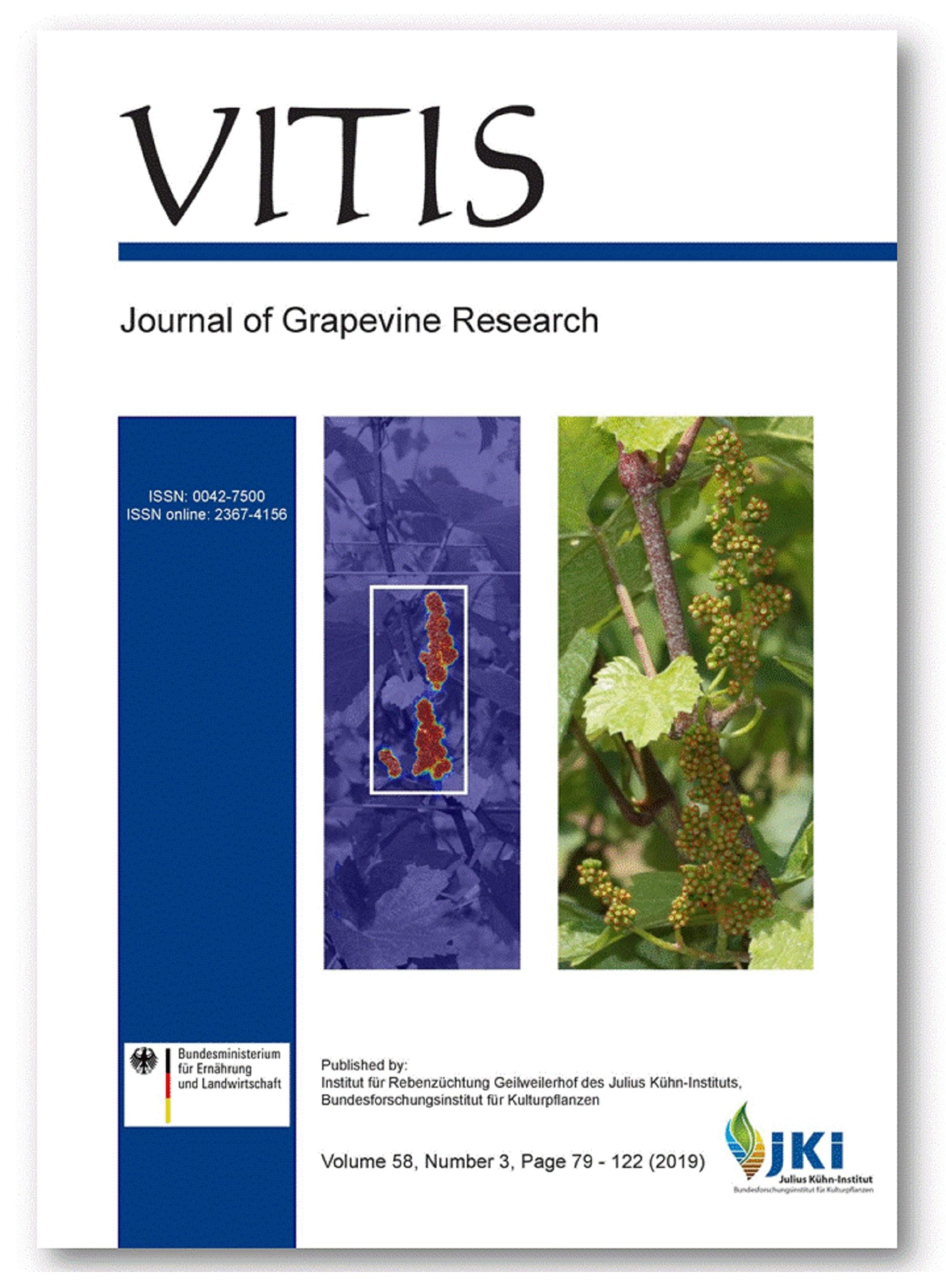Effect of pruning strategy on 'Syrah' bud necrosis and fruitfulness in Brazilian subtropical Southeast
DOI:
https://doi.org/10.5073/vitis.2019.58.87-94Keywords:
Vitis vinifera; bud necrosis; starch; pruning management; fruitfulness; bud anatomyAbstract
The change of wine grape harvest from wet season (summer) to dry season (winter) by changing the pruning management has improved quality of wines produced in the Brazilian Southeast. However, the vines need to be spur pruned twice a year, i.e. with a 1st pruning in August (winter pruning) for a vegetative cycle during the hot and wet summer, and a 2nd pruning in January (summer pruning) for a productive cycle during the cold and dry season. This double pruning strategy is made necessary by the fact that latent buds developed during the dry season cycle are not fruitful to support a productive cycle in the following year. This histological study, performed in the South of Minas Gerais State (Brazil), showed that annual single pruning done in the wet season (in January) displayed a high rate of necrosis on primary and secondary buds (bud necrosis – BN). In April, 99 days after summer pruning (DASP), the rates of BN were 40 % and 50 % at basal and apical node positions, respectively, reaching 80 % of BN in December (322 DASP). As a consequence of BN, bud potential fertility was drastically reduced from 0.5 inflorescence primordial (IP) per bud (in July) to 0.06 (in December) and bud burst in the next cycle from secondary and tertiary bud axes. Vines managed by double pruning system (submitted to summer and winter pruning) displayed a much higher fruitfulness potential, i.e. 1.46 IP per bud in December (112 days after winter pruning) and limited BN occurrence (20 %). On single pruned vines, we also observed a significant decrease of starch content in canes, trunks and roots. Internal bud anatomy showed that a random cell breakdown started 70 days DASP. At 211 DASP, all buds showed a large starch granule concentration, raphides and crystals of calcium oxalate inside idioblasts of leaf primordia and also in cortical parenchyma of the vegetative axis. The bud starch content was increased and a positive correlation between necrosis and starch accumulation was observed. The impact of carbohydrate availability on bud necrosis development was discussed. This study showed that the necrosis development towards secondary and tertiary axis of the dry season buds is the main reason of unfruitfulness in the vineyards managed by single pruning in the wet season, making the double pruning compulsory.
Downloads
Published
Issue
Section
License
The content of VITIS is published under a Creative Commons Attribution 4.0 license. Any user is free to share and adapt (remix, transform, build upon) the content as long as the original publication is attributed (authors, title, year, journal, issue, pages) and any changes to the original are clearly labeled. We do not prohibit or charge a fee for reuse of published content. The use of general descriptive names, trade names, trademarks, and so forth in any publication herein, even if not specifically indicated, does not imply that these names are not protected by the relevant laws and regulations. The submitting author agrees to these terms on behalf of all co-authors when submitting a manuscript. Please be aware that this license cannot be revoked. All authors retain the copyright on their work and are able to enter into separate, additional contractual arrangements.



